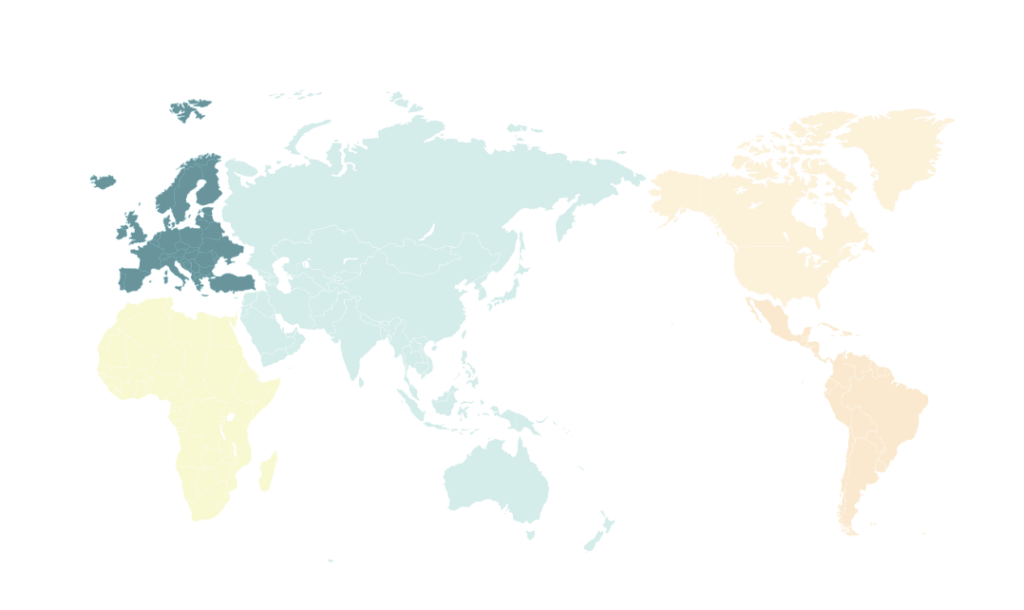Main Theme
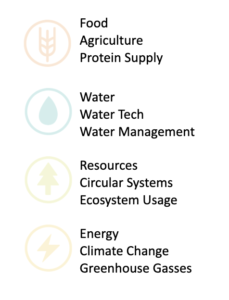
Sub-theme: Fast fashion; Sustainable business models, Circular economy
Abstract
Fast fashion, characterized by the rapid production of low-cost clothing to meet the constantly changing demands of consumers, is a major global industry that has significant negative impacts on the environment and the working conditions of people who make clothes. Driven by consumer demand for affordable and trendy clothing – and the globalization of the associated consumer culture – fast-fashion industry is predicted to grow at 10.7% CAGR in the coming years.
Clothing rental offers a sustainable and affordable alternative. By “slowing down” fast fashion, it offers a meaningful solution against fast fashion. Clothing rental companies allow individuals to rent clothing for a specific period of time and then return it for others to use, reducing the overall demand for new clothes, and thus, a reduction in the environmental impact of the fashion industry. Clothing rental can move towards a circular economy where resources are used in a closed loop and where products are recycled and reused multiple times. However, the clothing rental industry also has its own set of limitations, such as limited selection and sizes, limited wear, limited accessibility, limited duration, and limited economic access.
Various clothing rental initiatives are increasingly focusing on sustainability, such as reducing transportation, offering sustainable and ethical brands, implementing cleaning and care protocols, offering extended rental periods, investing in technology, and transparent communication. Through a journey through fast-fashion, a powerful circular economy solution and its current limitations, this article provides a great example of the challenges in implementing circular economy solutions.
Sustainable Development Goals Chart

Main Highlights
- Fast fashion industry is a significant global industry with billions of dollars in revenue each year. According to some estimates, the global fast fashion market is projected to grow to $184.96 billion in 2027 at a CAGR of 10.7%.
- Fast fashion, though convenient, has a significant negative environmental impact as it creates a constant demand for new clothes, leading to overproduction, overconsumption and over-disposal of clothes. It’s the perfect example of a linear take-make-waste economy that results in environmental and social exploitation.
- Clothing rental is a way to combat the negative impacts of fast fashion. The idea is simple: instead of buying new clothes, individuals can rent clothing when needed and then return it for others to use.
- Some known initiatives of clothing rental include Rent the Runway, Le Tote, ReBurberry and Gucci Off the Grid. These cater to high end fashion items and make them available through affordable business models to the wider market.
- Other clothing rental initiatives include Ravina – a new Norwegian start-up focusing on non-designer clothing that upgrades old clothing according to new fashion trends.
- Despite the growing number of Clothing rental initiatives, it is still a relatively new concept. It faces major limitations such as limited collection, accessibility issues, cultural barriers to shared clothing and affordability. In addition, the clothing solution often still sources clothing from unsustainable fashion and is not a perfect, closed-loop solution.
Case Overview
Every year, an estimated 80 billion pieces of clothing are produced and sold around the world. This ever growing consumption is boosted by fast changing fashion styles and made worse by the most popular business model in the fashion industry – Fast fashion.
Fast fashion is a term used to describe the dominant business model in the clothing industry that replicates recent catwalk trends and high-fashion designs, mass-produces them at low cost, and brings them to retail stores quickly while demand is highest. The fast fashion industry is a significant global industry, with billions of dollars in revenue each year. According to McKinsey, If the industry was ranked alongside individual countries’ GDP the global fashion industry would represent the seventh-largest economy in the world. According to some estimates, the global fast fashion market is projected to grow to $184.96 billion in 2027 at a CAGR of 10.7%.
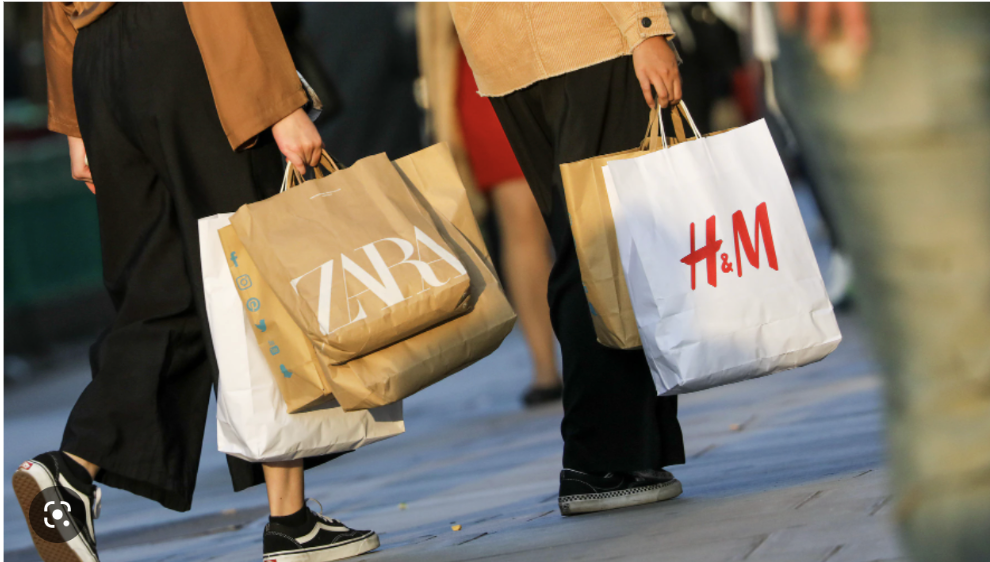
Image: Fast fashion promotes an unsustainable consumer culture
Fast fashion has several pros, including affordability, availability of trendy clothing, and convenience for consumers. However, it has severely damaging effects – significant cons. Fast fashion creates a constant demand for new clothes, and leads to overproduction, overconsumption and over-disposal of clothes. Beyond its negative impact on the environment through overconsumption, fast-fashion is often produced using cheap, toxic, and environmentally damaging methods. Additionally, fast fashion relies on the exploitation of workers in developing countries, who are often paid very low wages and work in poor conditions. Finally, fast fashion is not sustainable, as it encourages consumers to buy more clothes than they need, leading to a culture of disposability and waste. Even when donated, the vast majority of the clothes are exported to global second-hand trade, which harms local fashion markets in those countries. This model is by definition linear (take-make-waste) and results in sustainability challenges throughout its value chain.
As more and more people become aware of the environmental consequences of overproduction in the fashion industry and the ethical issues surrounding fast fashion, the need for alternative solutions grows. However, many of these alternatives are not as accessible or convenient as fast fashion, which can be cheaply and easily purchased for any occasion or trend. The affordable and convenient nature of fast fashion and ‘ultra-fast fashion’ is what makes it appealing to many consumers. In contrast, sustainable fashion is often seen as a luxury, with many pieces costing hundreds of dollars. Not everyone can afford to purchase these items, or the time and effort it takes to shop for sustainable fashion at thrift stores or flea markets.
Clothing rental has been gaining popularity in recent years as a way to combat the negative impacts of fast fashion. The idea behind clothing rental is simple: instead of buying new clothes, individuals can rent clothing for a specific period of time and then return it for others to use. This concept has been around for decades, but it is only in recent years that it has started to gain mainstream attention as a sustainable and affordable alternative to fast fashion.

Image: Clothing rental as a way to combat the negative impacts of fast fashion.
One of the first notable initiatives for clothing rental was Rent the Runway, a company that was founded in 2009. US-based company Rent the Runway started as an online platform that allowed individuals to rent designer dresses and accessories for special occasions. Since then, the company has grown to include a wide range of clothing and accessories for everyday wear. Now with more than $1 million in revenue, Rent the Runway was one of the first companies to make clothing rental mainstream and accessible to a wide range of consumers.
Another early initiative for clothing rental is Le Tote, a clothing rental service that was founded in 2012. Le Tote allows customers to rent a curated selection of clothing and accessories on a monthly basis. The company uses a unique algorithm to select clothing and accessories to match each customer’s style and preferences. Le Tote’s approach to clothing rental was innovative in its use of technology to personalize the rental experience for each customer.
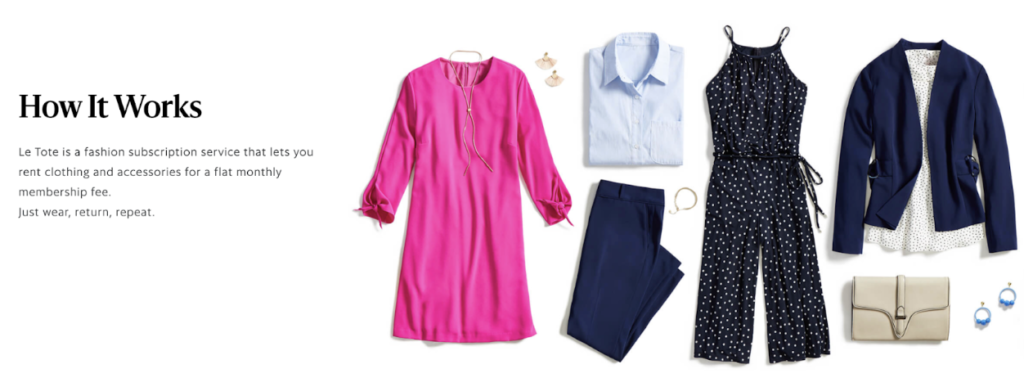
Image: Customers can rent a curated selection of clothing on a subscription basis
Initiatives for clothing rental have also been launched by several high-end fashion brands. For example, in 2017 Burberry launched ReBurberry Edit, a clothing rental service that allows customers to rent select pieces from the brand’s collection. Similarly, in 2018, Gucci launched Gucci Off The Grid, a sustainable clothing line that includes a clothing rental service for select pieces. Beyond the high-end and luxury fashion market, there are several recent initiatives in clothing rental that are worth mentioning:
- Nuuly: Nuuly is a new clothing rental service launched by Urban Outfitters in 2019. It offers a wide variety of clothing and accessories from a variety of brands, including some of its own brands such as Free People and Anthropologie.
- Wardrobe: Wardrobe is a new clothing rental service that was launched in 2020. It offers a wide variety of clothing and accessories, and focuses on creating a more personal and sustainable clothing rental experience.
- Lindström: Lindström is a platform that rents out workwear for people who work in industries such as healthcare, logistics, and construction. It aims to reduce the environmental impact of fast fashion, by providing durable, and sustainable workwear that can be used for longer periods of time.
- ByRotation: ByRotation is a new peer-to-peer rental service that offers a wide selection of clothing and accessories for women. It focuses on ‘community’ that rents, shares and sells its clothing.
- GlamCorner: GlamCorner is an Australian-based clothing rental service that focuses on special events, such as weddings, parties, and red-carpet events. They also offer a plus-size range and have a variety of sustainable options.
- Ravina: Ravina is a Norwegian startup that focuses on everyday wear. They extend the life of old clothing by upgrading it in accordance with new fashion trends.
These are just a few examples of recent initiatives in clothing rental. As the industry continues to evolve and grow, more and more companies are entering the market and innovating new ways to provide sustainable and affordable fashion rental options. Early initiatives have shown that clothing rental can be a viable and sustainable alternative to fast fashion.
Clothing rental, however, is still a relatively new concept. Assessing the language used for marketing clothing rentals, the emphasis remains on access to affordable fashion or the financial gains in selling designer items. Seemingly innocuous, these marketing tactics do not enable the desired behavior change towards sustainable fashion. On the user end, clothing rental initiatives face several limitations that make it difficult for people to fully embrace the concept. Some of these limitations include:
- Limited selection: While clothing rental companies are expanding their selection, they still may not have as wide of a variety of clothing as traditional retailers, which can be a limitation for consumers looking for specific items or styles.
- Limited sizes: Many clothing rental companies only carry a limited range of sizes, which can make it difficult for people who are outside of the “average” size range to find clothing that fits them.
- Limited wear: Some people may be hesitant to rent clothes because they want to be able to wear them more than once, or because they want to be able to wear them in different ways. Additionally, some people may be hesitant to wear clothes that have been worn by other people.
- Limited accessibility: Clothing rental may not be as accessible to people living in rural areas, as it typically requires access to the internet and to a shipping address.
- Limited duration: Some people may not be able to commit to renting clothes for a specific period of time and would prefer to own the clothes they wear.
- Limited economic access: Clothing rental can be an expensive option for some, as the monthly subscription cost can add up quickly. Additionally, the rental companies often require a credit card, which can be an obstacle for people who don’t have one.
- Limited sustainability: While clothing rental can be seen as a more sustainable alternative to fast fashion, the industry still has its own set of environmental and ethical issues. The constant shipping and cleaning of clothes can also have an environmental impact, and there are questions about how rental companies ensure that the clothes they rent out are ethically and sustainably made, and what happens to the clothes after they are no longer rentable.
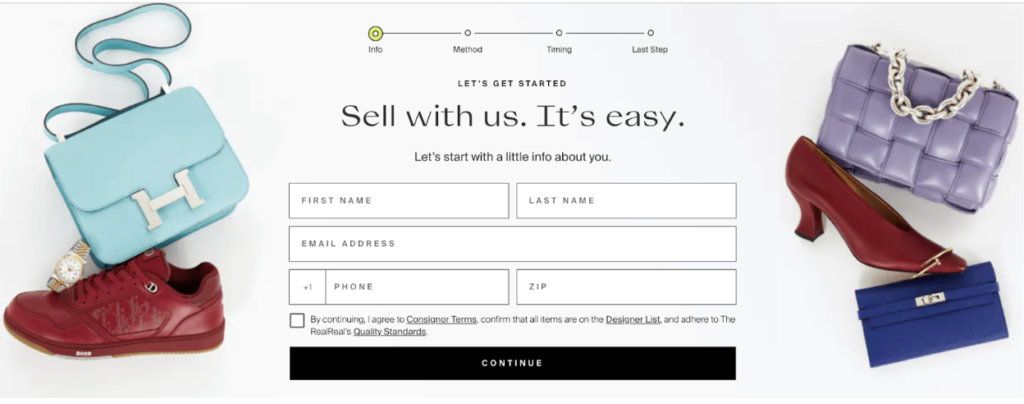
Image: The rental market makes selling clothing easy.
Impact Statement
Renting fashion can potentially reduce some of the negative impacts of fast fashion. One of the main benefits of renting clothes is that it allows people to wear a wide variety of styles and brands without having to purchase them, which can reduce the overall demand for fast fashion products. Additionally, renting clothes can help to reduce waste, as clothes that are no longer needed can be returned and worn by someone else.
However, the rental clothing industry still has its own set of environmental and ethical issues. Rental clothing still relies on fast fashion to keep up with demand, both in terms of volume and style. The constant shipping and cleaning of clothes can also have an added environmental impact. Additionally, there are questions about how rental companies ensure that the clothes they rent out are ethically and sustainably made, and lack of transparency about the end-of-life solution for clothes after they are no longer rentable.
Overall, renting clothes can be a step in the right direction to reduce the negative impact of fast fashion, but it is not a solution on its own. Conscious consumerism is possibly a more sustainable solution with a more lasting impact. This would include buying second-hand clothes, supporting sustainable and ethical brands and consuming less in general. However, conscious consumerism does not involve a gainful financial model to support or promote it.
Systems Perspective
Clothing rental can be seen as a way to disrupt the traditional fast fashion model, quite simply by slowing-it-down. Clothing rentals can also be seen as a way to move towards a circular economy, as clothes are rented and used by multiple people before being recycled or repurposed.
However, the rental industry still has its own set of environmental and ethical issues. For example, its reliance on fast fashion to keep up with demand, and the constant shipping and cleaning of clothes. Without a sustainable source and a safe end-of-life solution, clothing rental is not a perfect circular economy solution. The industry is taking steps to solve its limitations, such as:
- Investing in circular economy practices: Using recycled and sustainable materials, designing clothes with ease of recycling in mind, and promoting repair and reuse of clothes.
- Offering sustainable and ethical brands: Offering sustainable and ethically-made clothing as part of their rental options, which allows customers to access sustainable fashion without the high cost.
- Cleaning and care protocols: Implementing cleaning and care protocols to extend the life of clothes, reduce the use of water, energy and chemicals and minimize the environmental impact of cleaning clothes.
- Reducing transport: Offering extended rental periods to reduce the overall number of clothes that need to be shipped.
- Transparent communication: Companies are being more transparent with their customers about their sustainability efforts, and the impact of their clothing rental service on the environment and society.
Overall, clothing rental can be seen as a way to reduce the negative impacts of fast fashion and move towards a more circular economy. However, it is important to consider the broader systems perspective and address the potential issues that may arise in order to make the rental industry truly sustainable.
Links and Contact Information
Rent the Runway – https://www.renttherunway.com/
Le Tote – https://letote.com/
ReBurberry Edit – https://www.burberryplc.com/en/news/corporate/2020/burberry-launches–reburberry-edit–made-from-innovative-materia.html
Gucci Off the Grid – https://www.gucci.com/uk/en_gb/st/capsule/circular-line-off-the-grid
Nuuly – https://www.nuuly.com/
Lindström – https://lindstromgroup.com/uk/industrial-workwear/
Ravina – https://ravina.no/
Case by: 4Revs Researcher Dr. Puja Thiel | February 2023

